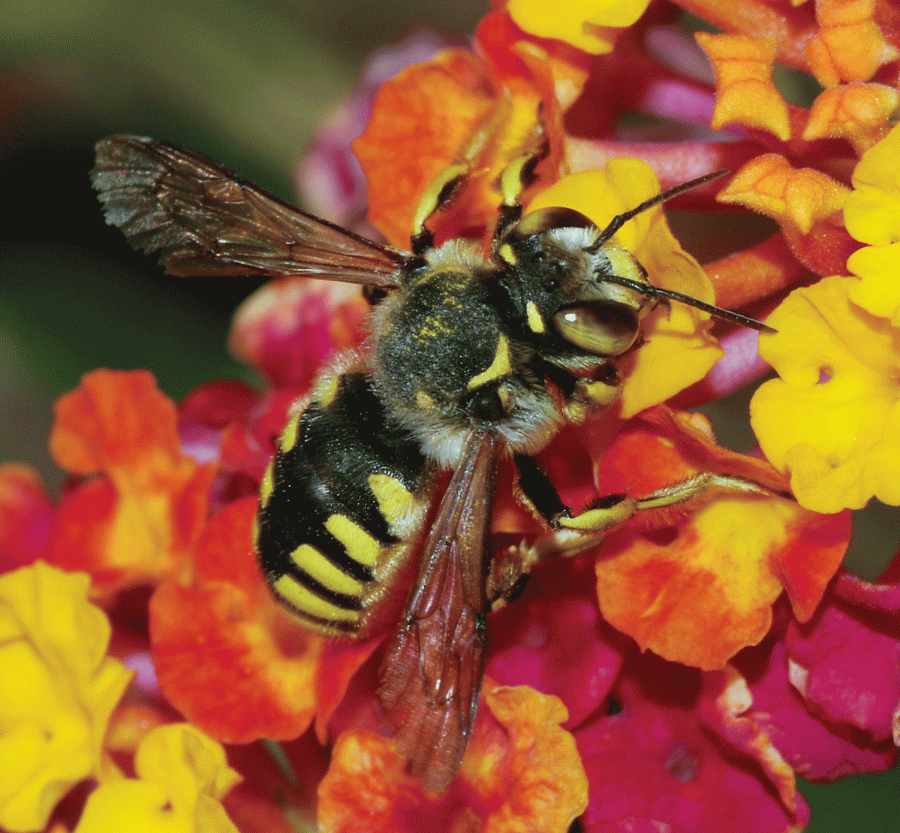Sustainability Column: Bees: Nature’s Best Workers, Humans’ Most Misconcieved Pests
The U.S. agricultural economy could hardly survive without the existence of our greatest natural pollinator.
Bees are incredibly important, yet they are dying at alarming rates. This is not a good situation.
Why is this bad? Bees are pollinators. You probably remember this from grade school science lessons. Like birds, bats, beetles and butterflies, these tiny workers aid in the fertilization of a substantial proportion of the plants we rely on for human survival. Pollinators aid in fertilization by transferring pollen and seeds from one plant to another, so reproduction and growth of the species can occur. Unfortunately, the world has seen a decrease in bee population by over 25 percent since the early 1990s, as a result of Colony Collapse Disorder (CCD). CCD is the result of the majority of worker bees in a colony disappearing, leaving behind the queen, food and a few nurse bees that care for immature bees and the queen. The exact cause of this phenomenon is not fully understood, but various hypotheses include malnutrition, immune deficiencies and genetic deficiencies. These different hypotheses are the result of greater issues – global warming, pesticide use, habitat loss and parasites.
Firstly, the rise in average global temperatures causes flowers to bloom earlier in the year, but pollinators coming out of hibernation are not able to adapt to this change. The flowers they need for food to start the working season have already bloomed, causing major setbacks. Secondly, the toxic pesticides used on farms to protect against harmful predators have a negative consequence on honeybees. The National Resource Defense Council (NRDC) states that honeybees in the United States are the most affected by CCD, and it’s not a coincidence that many of the pesticides banned abroad are still regularly used here. Further, continual development and spread of human populations, especially growth that does not leave room for wildlife habitat to be incorporated, reduce space needed for honeybees and other pollinators to make homes. Lastly, parasites that are able to survive, and make effective use of global changes increase and affect species that are unable to be as resilient.
Back to the sad truth about the decrease in bees – if this trend continues to drastic levels, human survival and economic growth with be significantly hampered. Economically, bees pollinate more than $15 billion a year in U.S. crops, such as apples, cucumbers and even almonds. Also, according to the NRDC, honeybees produce the equivalent of $150 million in honey per year.
Let’s take a quick look at almond production in California, one crop that is solely reliant on honeybee pollination. At the beginning of each blooming season, 1.6 million honeybee colonies are transferred to the California Almond Orchards from across the United States. However, it is becoming increasingly hard for honeybee keepers to keep up with the supply, especially because of CCD. Currently California’s almond production brings in a net profit of $2.3 billion a year, but they need over half of the U.S. honeybee population in order to stay afloat. Close to 80 percent of the entire world’s almond supply comes from California, and 70 percent of California almonds are exported, making it the state’s largest valued agricultural export. According to a 2011 Giannini Foundation of Agricultural Economics report, it is estimated that each year, CCD raises costs nearly $83 million dollars for almond production. With continual declines in honeybee populations, added costs to both industries that require honeybee pollination, as well as independent farmers across the U.S. who provide honeybees to this industry will decrease the stability for jobs and economic prosperity.
How can the public help reverse this trend? We need to influence policy makers. First off, farmers need to be rewarded for sustainable practices instead of ones that help destroy the environment. By simply leaving habitat within or in the surrounding areas of their fields, they are significantly increasing the ability for wild bees to survive. It is also helpful for the farmers to alternate crops in each field throughout the year. Cutting back or eliminating harmful pesticides, which often are the cheapest form of pest control, will help deduce economic losses in the future. Integrate Pest Management (IPM) is an option that can be funded to minimize the harmful chemicals and reducing risk to pollinators. Our lawmakers should be assisting farmers with sustainable ethics instead of subsidizing the farmers or large companies who want to save a buck at the cost of the environment. Budget increases for research and technology development will produce alternatives to the current destructive practices. Facing the costs now will help future generations, our grandchildren, be able to live as well as we do today, instead of fixing the mistakes our generations are creating now.









